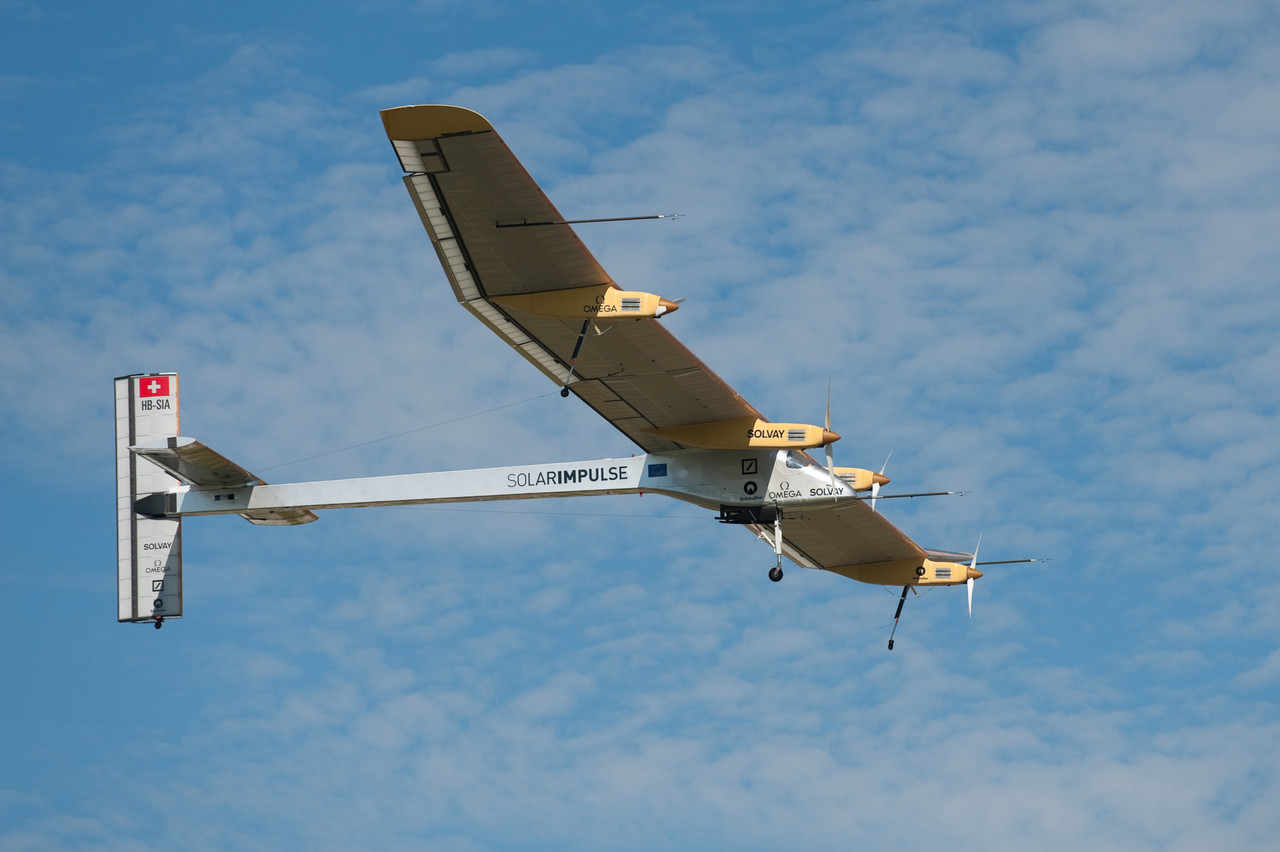“We have something like 600,000 airplanes flying today. We can expect that by 2050, there will maybe be one million,” André Borschberg, H55 co-founder and executive chairman, on 17 November. H55 is the spinoff of the Solar Impulse project, which was the first electric plane to fly around the world, and produces energy storage systems and electric propulsion systems for airplanes. “Either we transform these airplanes and make them clean, or we build new ones.”
On one side, there’s pressure to make aviation clean. But industries don’t like to change, said Borschberg, and there has to be motivation. If you look at the technologies available today, “there’s also a fantastic opportunity.”
Electric motors are incredibly efficient--almost 100%, or slightly below.
Combustion engines are both inefficient and require lots of maintenance. But “electric motors are incredibly efficient--almost 100%, or slightly below,” continued Borschberg. The technology is also very simple--there’s no friction and no wear, so there is very little maintenance. You can have one, five or ten motors--“in the end, the total weight will be about the same.” This allows different types of configurations and different types of airplanes.
“So that’s the opportunity. Of course, we have to bring the energy to this propulsion, but in terms of technology, this will help, and certainly drive the change to clean aviation.”
However, the aviation industry is conservative, and certification authorities also have to adapt to these new technologies, so it’s important to start now, according to the H55 co-founder.
The industry perspective
Don’t underestimate the drive within the aerospace industry to tackle this challenge, said Matheu Parr, customer director of Rolls-Royce Electrical, pointing to “radical shifts” in recent years to address the route to net zero.
“I’m very proud that [Rolls-Royce] was the first company to sign up to the UN pledge for net zero out of the aerospace industry,” Parr said. “Within Rolls-Royce, by the end of 2023, we will ensure that all our engines can run on sustainable aviation fuel, but we’re also investing in disruptive technologies, including electrification and hydrogen.”
We absolutely see electric aviation here to stay.
Moreover, improvements in batteries will also increase the efficiency of engines. “We absolutely see electric aviation here to stay,” stated Parr.
The Rolls-Royce customer director said he saw the most need for government support is in the regulatory space. Frameworks for certification are evolving, but “that’s where we need to see the most focus going forward.”
Borschberg added, “Just by making this technology fly, that’s how we’re demonstrating that it’s safe to be integrated into larger airplanes.” For example, if they were to integrate 300 battery modules into 100 aircraft, then make them fly 100 hours, that would result in 3 billion-module hours. That would provide a lot of data and information for the certification authorities, as well as promote confidence in these technologies.
There’s also a need to increase the volumes of sustainable aviation fuel in the market and to bring the price point down, noted Parr. “Government support in that area would be very well valued.”
Risks and opportunities for investors
There are plenty of risks, from high capital intensity to competition with state-owned companies, said Christian Roessing, co-portfolio manager of the Pictet clean energy strategy fund at Pictet Asset Management. But more regulation would be key to reducing risks, and there are clearly “opportunities for those who are the best at managing those risks.”
“Taking a step back and looking at mobility as a whole, I think electrification will definitely surprise more people in terms of their applications,” said Roessing. Transport will move towards electrification, according to the portfolio manager, thanks to improvements and innovations in battery technology and lower costs.
With regards to when a company in the aviation industry will become investable, Roessing said that they would look at the “purity” of the company, meaning “the percentage of a certain company’s activity that can be related to the energy transition.” This could be the part of a utility company that is related to solar or wind, for example.
In terms of the aviation industry, for instance, they would look at when the majority of trips would be electric or flown on sustainable aviation fuels.

The Solar Impulse was the first electric plane to fly around the world. Frederic Legrand - COMEO/Shutterstock.
Besides the purity of the company, Roessing mentioned it’s also important to consider whether the wide majority of capex is going in the right direction. “We would make a clear effort to engage with these companies, making we do understand the decarbonisation plan, that we have clear milestones.” They would also want to ensure that investor money is indeed funding new technology investments.
The impact of climate activism?
When asked about recent actions carried out by climate activists, and whether they were justified, Borschberg replied, “I think the activist has an impact on the political world.” He added, “We need these guys, because we need to move faster.” It’s not just industry that needs to become more conscious. The political world also has to bring other elements to make the transition.
“Personally, I’m very privileged to lead a team that built the world’s fastest electric plane, which was a great opportunity to go break some records, but also a great opportunity to go engage with the public and talk about what this technology can do,” said Parr. “I think some of the strongest activists for the need to change sit within the aerospace industry as well, driving technology programmes.”
“We’re personally very excited, very positive about what we’re doing,” Parr said. It is, fundamentally, about how we’re changing the way we travel.


